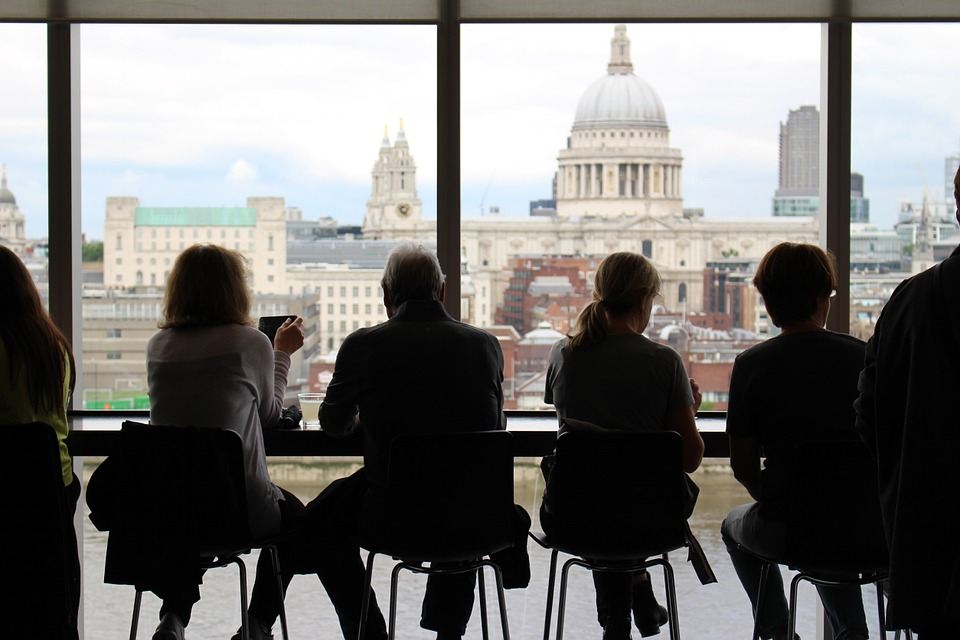The Art and Science of Productive Team Meetings

As much as they get in the way, meetings are a part of any team work environment. At some point you have to actually talk to the people you’re working alongside.
In customer success, there’s no avoiding them. The nature of our work requires long-term thinking and strategy. Often many people will contribute to a project, especially if you assign work based on strengths.
Somewhere along the way, we forgot the purpose of meetings. A meeting is a tool that should facilitate work. It’s not work itself. Unless you’re a C-level manager whose job is to direct other people, meetings shouldn’t be a large part of your day. If 25% or more of your day is scheduled for a meeting, you have a meeting problem.
But since meetings are often necessary, you need to make them as productive as possible so that a.) They finish quickly, allowing you to move on with your day, and b.) You can schedule fewer of them.
Limit the number of attendees

Logic tells us that to get more work done, you should invite more people. Four people can move a house faster than two. Invite the whole neighborhood and you would be done in an hour.
But “many hands make light work” only applies to laborious tasks. When you need decisions made or ideas critiqued, adding more people can actually be disabling.
It’s called Parkinson’s Law of Triviality, which states that people in groups tend to give disproportionate weight to pointless discussions. The law is based on an instance where a committee was gathered to discuss the designs for a nuclear power plant but spent all of their time discussing easy-to-understand trivialities, like the materials needed to construct a bike shed. A nuclear power plant isn’t easy for the average person, so they veered into topics they could understand.
You’ve probably seen this type of “bike-shedding” yourself: Someone in the room feels the need to say anything to justify their presence, even if their comments add little value.
The solution, of course, is to only invite people who can speak intelligently on the meeting’s topic. To design a nuclear power plant, you need engineers, physicists, and builders. Surely having more of the right people is useful, right?
The University of Minnesota found that isn’t the case either. Their study divided people into groups and gave each a problem to solve. Then they gave similar problems to each participant individually. 96% of participants came up with more and better ideas when they worked alone.
You see, as humans, conformity makes us comfortable. The dynamic of a group leads us to conform to other people’s thinking, even when those people are objectively wrong. Psychologist Solomon Asch ran a study where participants easily answered the questions on a simple vision test, until paid actors were planted to give wrong answers. Once the false answers were offered as truth, the group began to parrot the actors.
This tells us that committee-made decisions and brainstorming sessions just aren’t productive. As meetings become larger, less work gets done. When influential and knowledgeable people are added to the group, the group defers to their judgment, even when they’re clearly wrong.
You can boost the productivity of your meeting by reducing the number of people involved and making sure the attendees are acutely aware of the topic. Google caps their meetings at 10 people and Amazon uses the “two pizza rule.” If you need many people to be a part of a conversation, use an online medium like instant messaging or email to inhibit conformity.
Shorter meetings can be more productive

Our friend Parkinson had another law that applies to meetings, simply referred to as Parkinson’s Law: Work expands to fill the time available for its completion. If you allow more time for work, the work will magically expand to fill the space, even though the work’s quality isn’t likely to improve.
Meeting organizers routinely make the mistake of scheduling extra time “just in case.” On the surface, this seems smart. If you schedule a 30-minute meeting, but it takes 40, something was lost, right?
Generally, no, because we’re capable of budgeting our time and there are plenty of ways to follow up a discussion outside of the meeting. But if you schedule that meeting for an hour, attendees will still only be productive for the 40 necessary minutes. After that, you’re just adding complexity and stress, and keeping people from completing other work.
Furthermore, the human brain can only pay attention for about 10 or 15 minutes, and that number is dropping every year. Social scientist Dr. Paul King discovered that people are just as anxious listening to public speakers as the speakers themselves. If the listeners are required to consume too much information, the mental weight becomes too much and they forget everything.
To make your meetings as productive as possible, it’s best to schedule them for 15 minutes or less. Do not inflate the meeting time “just in case.” Set a specific agenda so everyone is clear about the meeting’s goals and when they’ve achieved (a pre-set goal can shave 17 minutes off a meeting). If the meeting has reached its objective early, cut it short.
Stop scheduling meetings in the morning

According to behavioral scientist Dan Ariely, the two hours in the morning after you become fully awake are the most productive part of your day. You can think with a clear head. Your body is rested and ready to support your mind. So it’s frustrating that people want to use this productive time for meetings.
Sure, being productive in a meeting is helpful, but it’s rarely necessary. Is it smart to waste the most productive time of your day updating a manager about a project’s process or reviewing last month’s figures? Usually not.
Meetings rarely require much mental strength, so they shouldn’t be scheduled for the morning when you are strongest. Instead, you should salvage that productive time for challenging tasks, and schedule meetings for times when you have less focus since meetings don’t require much of it. On top of that, morning meeting attendees will be distracted thinking of all the things they have to do for their day.
Resist the urge to schedule that quick standup meeting in the morning. Let your team settle into work and leave them alone until lunch or you’ll be depriving them of their morning potential. Mid-morning meetings are unacceptable too. Studies show that employees who are interrupted can require 25 minutes to refocus on their original task and frequent refocusing significantly raises stress levels.
So when’s the best time for a meeting? WhenIsGood.net, a service that helps people choose optimum event times, ran a study in 2009 that learned that the optimal meeting time is 3 P.M. on Tuesdays. At 3 P.M., we’re starting to lose focus, but not trying to sneak out the door yet. Tuesdays are early in the week, which doesn’t interfere with end of the week deadlines.
Some more advice for productive meetings
If you need people to be especially creative during a meeting, take a walk. According to a Stanford study, walking boosts creativity. Steve Jobs loved walking meetings.
Stand up meetings are popular software development (Scrum teams) to keep them short and concise, but they work for any team that’s trying to reduce their meeting schedules.
Schedule meetings for the same time. If you plan to meet twice or three times in a day, schedule them consecutively. This way your team will have long stretches of productive work time that isn’t broken up by changing their mindsets.
Video and phone calls are useful, but they have limitations. 65% of employees regularly do other work during a call, especially if there are a lot of people on the line. 47% take unannounced bathroom breaks and miss information.
Limit judging or criticizing. The goal is to generate and capture ideas before you start filtering out the inevitable bad ones. This also makes people reluctant to share ideas.
Provide any materials before the meeting. Don’t distribute documents as people enter the conference room. Give them time to consume the literature before the event so they don’t ignore you while they read it. This also gives them time to prepare questions. Send the materials along with a meeting agenda.
Always have a purpose
If you learn anything about running productive meetings, it should be this: Always have a purpose. Never host a meeting because “we haven’t had one of these in awhile.” Never drag your team into a room to ask questions that should be handled one-on-one or can be asked through an email.
If you give your employees the time they need to be productive, you’ll see better work to come out of your team.
